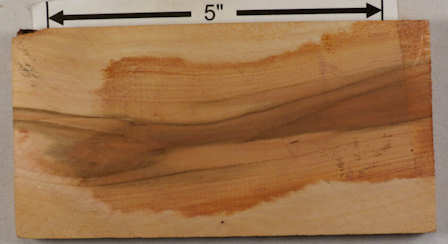
Plumwood is a special, heavy rather rare wood with a unique surface structure and a brown-violet color. It is mainly made of wind instruments, small furniture and carvings.
Plumwood, from which many beautiful things are made, comes from the orchard. The plum tree belongs to the genus Prunus and belongs to the hardwood family. It is cultivated in much of Europe for fruit production and not specifically to cultivate wood from it. The plum tree, from which the very attractive plum tree originates, grows throughout Europe, but is most likely native to the Caspian Sea region. Varied crosses have adapted the plum to very different climatic conditions. Plumwood also grows in Asia, South Africa and North America.
Appearance of plum wood
Plumwood has a shiny surface. The structure that it has is fine-pored. Its color is red to violet-brown with a very fine grain. This shows fine stripes and flames that sometimes turn out dark purple. Characteristic are different width clearly visible annual rings. The intense violet color in some places fades slowly. The violet color of the plum comes from a substance, with which the tree averts pests.
properties
Benefits of plum wood
special characteristic surface structure
good eco-balance, since it comes from Germany and is a by-product
Easy to process.
Plumwood is not resistant to pests: insects and fungi as well as the effects of the weather.
Plum wood is hard, firm and brittle
The wood can be used well for carving and turning.
In high heat and too fast drying cracks form.
The plum surface responds well to all wood preservatives. Due to the plum wood own surface structure is usually only oiled, polished or glazed.
The natural shine of plum wood is highlighted by transparent varnish.
Defects in plum wood Wood flaws have their origin in Astattbrüchen along the tree trunk.
Disadvantages of plum wood
not weather resistant
only in small quantities there by-product
not very dimensionally stable
difficult to split
Limited use due to the narrow nature of tree trunks, which are short and do not exceed two meters in length. This excludes large-scale work.
use
Turning works and carvings made of plum wood are popular.
Decorative knife handles, inlays and small appliances and items are made of plum wood.
Plumwood is used in the manufacture of wind instruments and among others as veneer of furniture
Small furniture and accessories for the bathroom and the kitchen, such as bowls, plates, cups or jewelery, are also popular products made of plum wood.
Also toothpaste is made from the ashes of plum wood and is said to help with bleeding gums. It is very expensive but economical in use.
 savillefurniture Interior Design Ideas
savillefurniture Interior Design Ideas